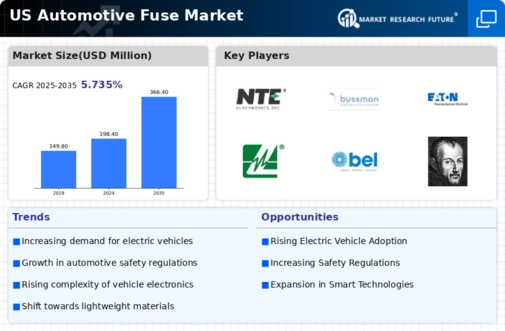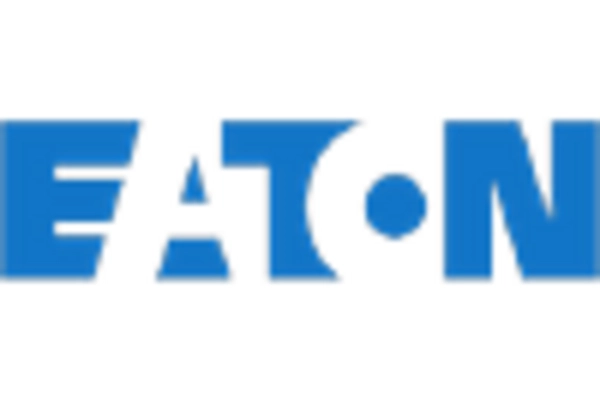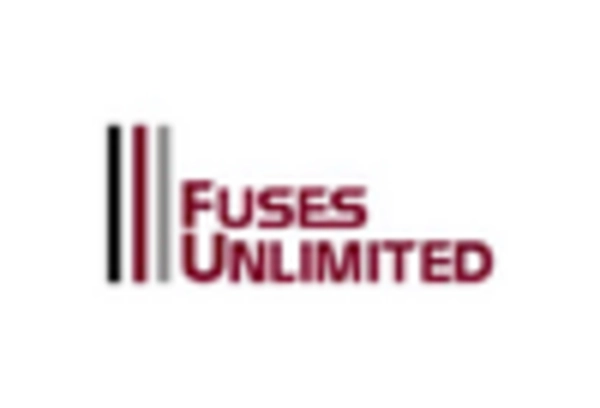Rising Vehicle Electrification
The The market is experiencing a notable surge due to the increasing electrification of vehicles. As more manufacturers shift towards electric and hybrid models, the demand for specialized fuses that can handle higher voltages and currents is rising. This transition is expected to drive the automotive fuse market significantly, with projections indicating a growth rate of approximately 8% annually through 2026. The need for reliable and efficient fuses in electric vehicles is paramount, as they protect sensitive electronic components from overloads and short circuits. Consequently, the automotive fuse market is adapting to these requirements, leading to innovations in fuse design and materials to enhance performance and safety.
Expansion of Automotive Production
The The market is benefiting from the expansion of automotive production in the United States. With the automotive industry recovering and growing, the demand for fuses is expected to rise correspondingly. In 2025, the production of light vehicles in the US is projected to reach around 15 million units, which will likely increase the need for automotive fuses. This growth is driven by both domestic manufacturers and foreign automakers establishing production facilities in the US. As production ramps up, the automotive fuse market is poised to see a corresponding increase in demand, particularly for fuses that meet the evolving needs of modern vehicles. This trend indicates a robust future for the automotive fuse market.
Technological Advancements in Fuse Design
The The market is witnessing a transformation due to technological advancements in fuse design and materials. Innovations such as miniaturization and the development of smart fuses are becoming increasingly prevalent. These advancements allow for better performance, reliability, and integration with modern vehicle electronics. The automotive fuse market is projected to grow by approximately 7% annually as manufacturers adopt these new technologies. Smart fuses, which can monitor electrical loads and provide diagnostic information, are particularly appealing to automakers looking to enhance vehicle performance and safety. This trend towards advanced fuse technology is likely to redefine the automotive fuse market, making it more competitive and efficient.
Growing Demand for Advanced Safety Features
The The market is being propelled by the increasing consumer demand for advanced safety features in vehicles. As automakers integrate more electronic systems, such as advanced driver-assistance systems (ADAS), the need for reliable fuses becomes critical. These systems often require specialized fuses to ensure proper functioning and protection against electrical faults. The automotive fuse market is projected to grow by approximately 6% annually as manufacturers respond to this trend. Enhanced safety regulations and standards are also influencing the market, as compliance with these regulations necessitates the use of high-quality fuses that can withstand various operational stresses. This focus on safety is likely to shape the future landscape of the automotive fuse market.
Increased Focus on Environmental Regulations
The The market is influenced by the heightened focus on environmental regulations and sustainability practices within the automotive industry. As manufacturers strive to meet stricter emissions standards and reduce their carbon footprint, the demand for eco-friendly materials in automotive components, including fuses, is increasing. This shift is expected to drive innovation in the automotive fuse market, with a projected growth rate of around 5% annually as companies seek to develop sustainable solutions. The integration of recyclable materials and energy-efficient manufacturing processes is becoming a priority, reflecting a broader trend towards sustainability in the automotive sector. This focus on environmental responsibility is likely to shape the future of the automotive fuse market.

















Leave a Comment